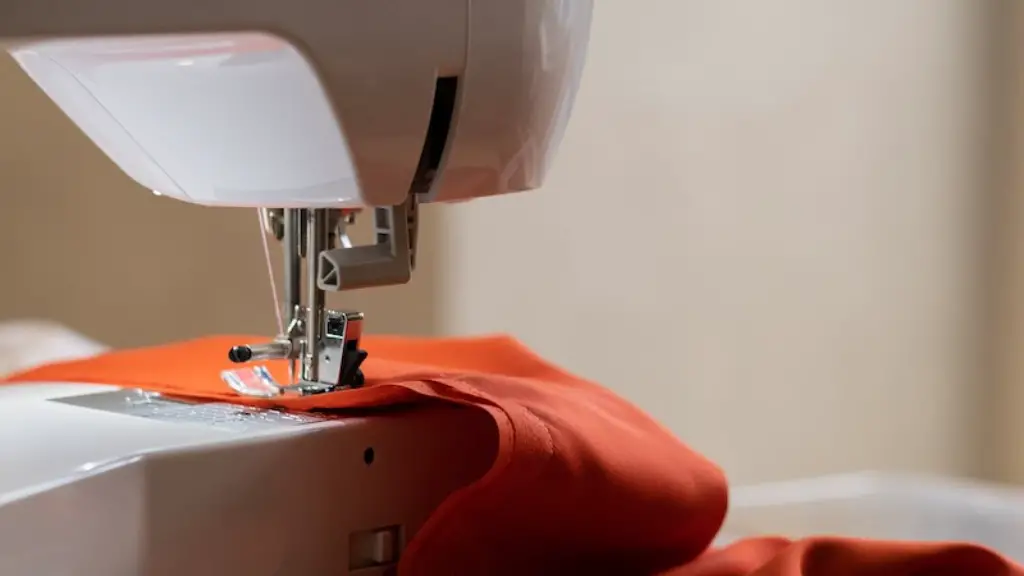Research
Restoring an antique sewing machine can be a long and laborious process, but it can also be extremely rewarding. Before beginning, it is important to research the type of machine, its age, and what spare parts may be needed to finish the job. As the machines are old and often rare, finding the right replacement parts can be difficult, not to mention expensive.
Inspection
Once you have found the right parts it is time to inspect the machine and determine what needs to be done to restore it. Check the sewing machine’s exterior and internal parts including the needle, presser foot, bobbin, and the machine’s gear system. If the machine is not cosmetic, then the tension, feed dog and any other mechanical parts may need to be adjusted or repaired.
Cleaning and Disassembly
The next step is to clean and disassemble the machine so you can get to the parts that need to be replaced or adjusted. Using a soft brush or a can of compressed air can help to remove any stubborn dirt and debris from hard to reach areas. Be sure to take your time and be gentle when handling the delicate parts as they can easily break or become damaged.
Replacement of Parts
Once the machine is disassembled, you will need to replace any broken or worn out parts with the new ones you purchased. It is important to follow the manufacturer’s instructions to ensure the successful installation of the new parts. Make sure the new parts are well lubricated before reassembling the machine.
Assembling and Testing
After you have all the new parts correctly installed, you can begin the process of reassembling the sewing machine. Make sure to put everything back into its original place and keep the manual handy in case you need to refer to it. Once everything is put back together and the machine is ready, it is important to test it to ensure that it is functioning properly and that everything works as it should.
Finishing Touches
The last step in restoring an antique sewing machine is to give it a good polish. Carefully sand, buff, and protect the exterior of the machine. Then use wax or a special polish to give the machine an extra shine.
Maintenance
Finally, regular maintenance is essential for antique sewing machines. This includes regularly cleaning and lubricating the machine, and replacing any worn out or broken parts as soon as possible. Regular maintenance can help ensure the longevity of the machine and extend its lifetime.
Finding the Right Expert
When restoring an antique sewing machine, it is important to find an expert who is knowledgeable and experienced in this field. Experts can help you make informed decisions and provide practical advice on the best way to go about restoring the machine. Most experts offer both online and offline services, and can advise you on the right parts and techniques to use so you can get the job done properly.
Safety Precautions
When restoring an antique sewing machine, always take safety precautions to avoid accidents and injuries. Wear protective gloves and glasses to protect your hands and eyes from dust and chemical spills, and be sure to disconnect the power source before beginning any repairs. Disconnecting the power source will help to prevent electric shocks, and any other accidents caused by malfunctioning equipment.
Parts and Accessories
In order to restore an antique sewing machine successfully, you need to have the right parts and accessories on hand. Find the right parts online or in specialised stores that cater to antique machines. Keep in mind that the newer parts may not be compatible with the older models, so always check the compatibility before purchasing.
Resources
Finding the right resources can be an important part of restoring an antique sewing machine. There are a variety of websites and books dedicated to this type of work, so do your research and find the best sources for helpful advice. Forums and online communities may also be useful for finding helpful information and support from experienced restorers.
Sewing Tutorials
If you want to get the best out of an antique sewing machine, tutorials are essential. Learn the basics of hand sewing, machine sewing, and embroidery to ensure the successful completion of any project. Tutorials can provide step-by-step instructions and tips on how to restore an antique sewing machine, as well as how to use the machine once it has been restored.
Tools and Materials
In order to restore an antique sewing machine, you need to have the right tools and materials. Make sure you have the appropriate screwdrivers, wrenches, wire cutters, and all other necessary tools before beginning the restoration process. Also, be sure to have the right cleaning and lubrication materials on hand, as well as any applicable replacement parts for any mechanical work.



